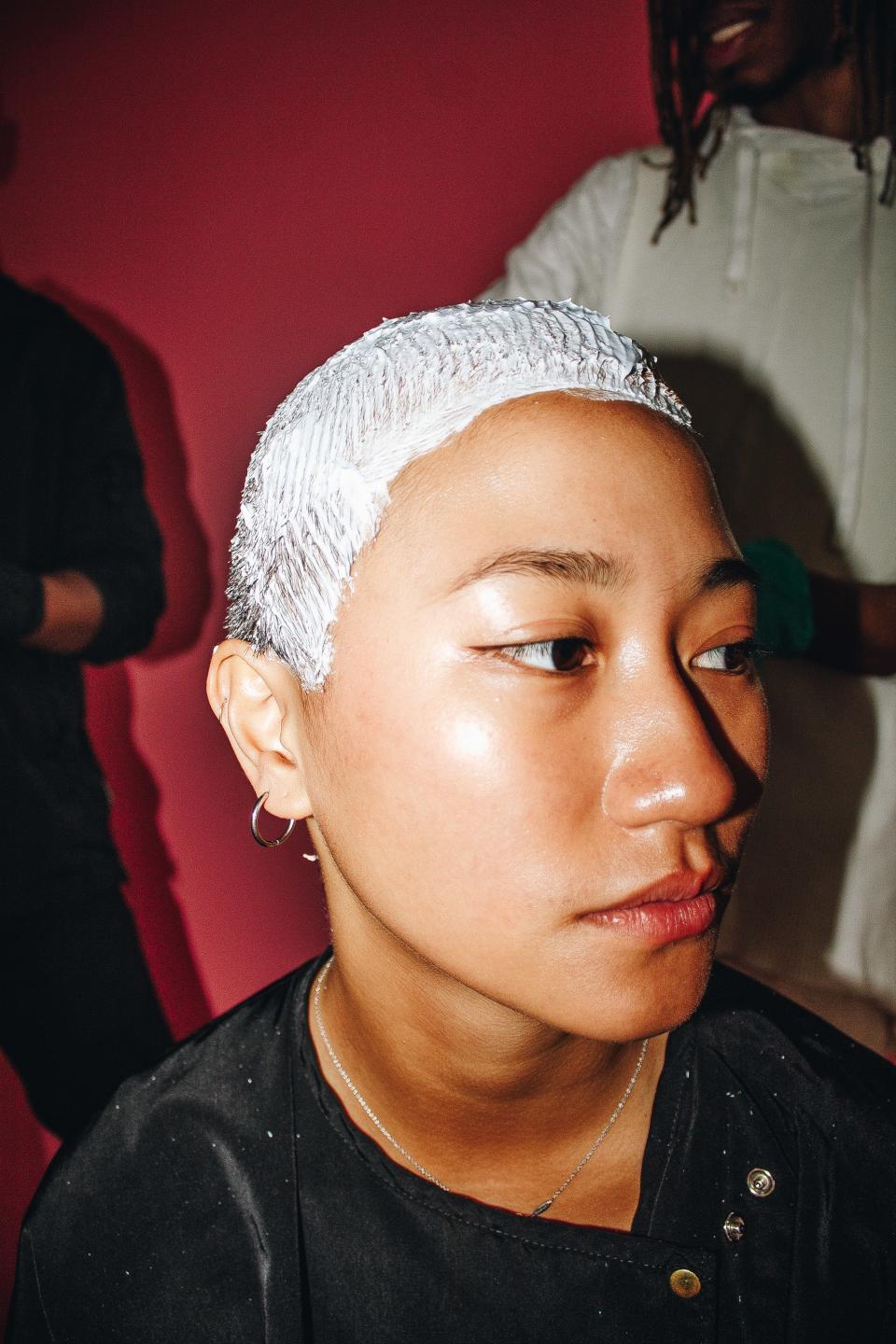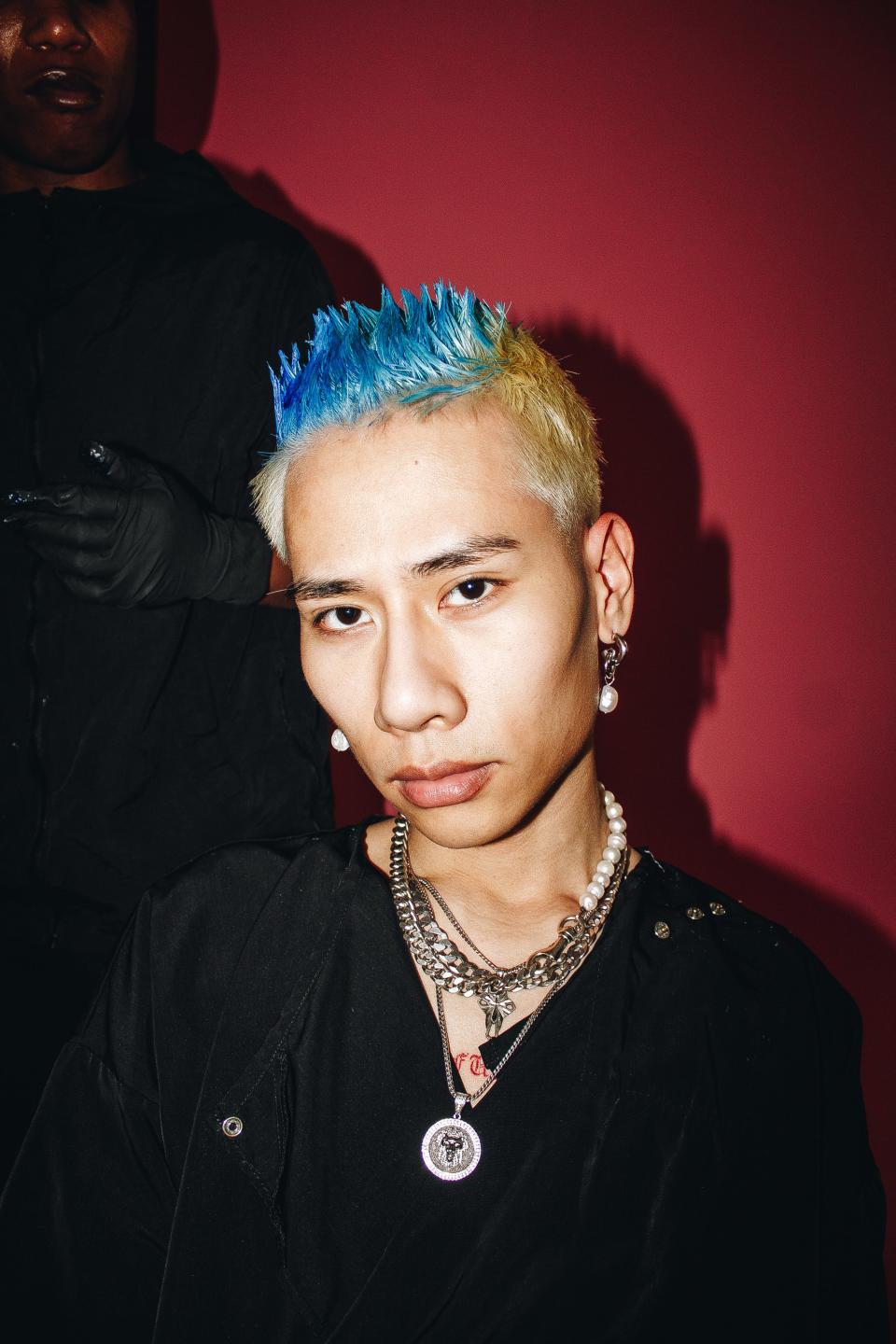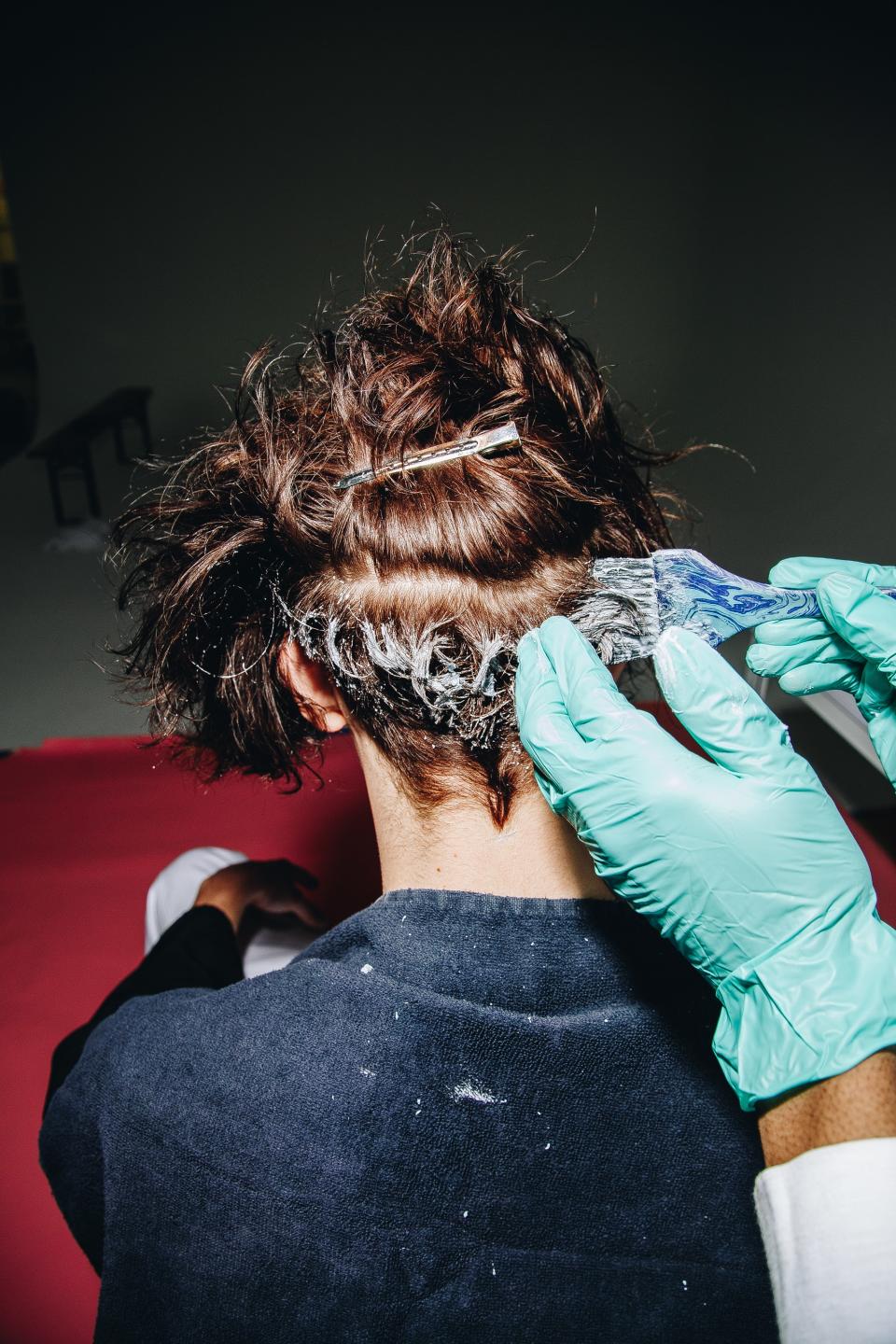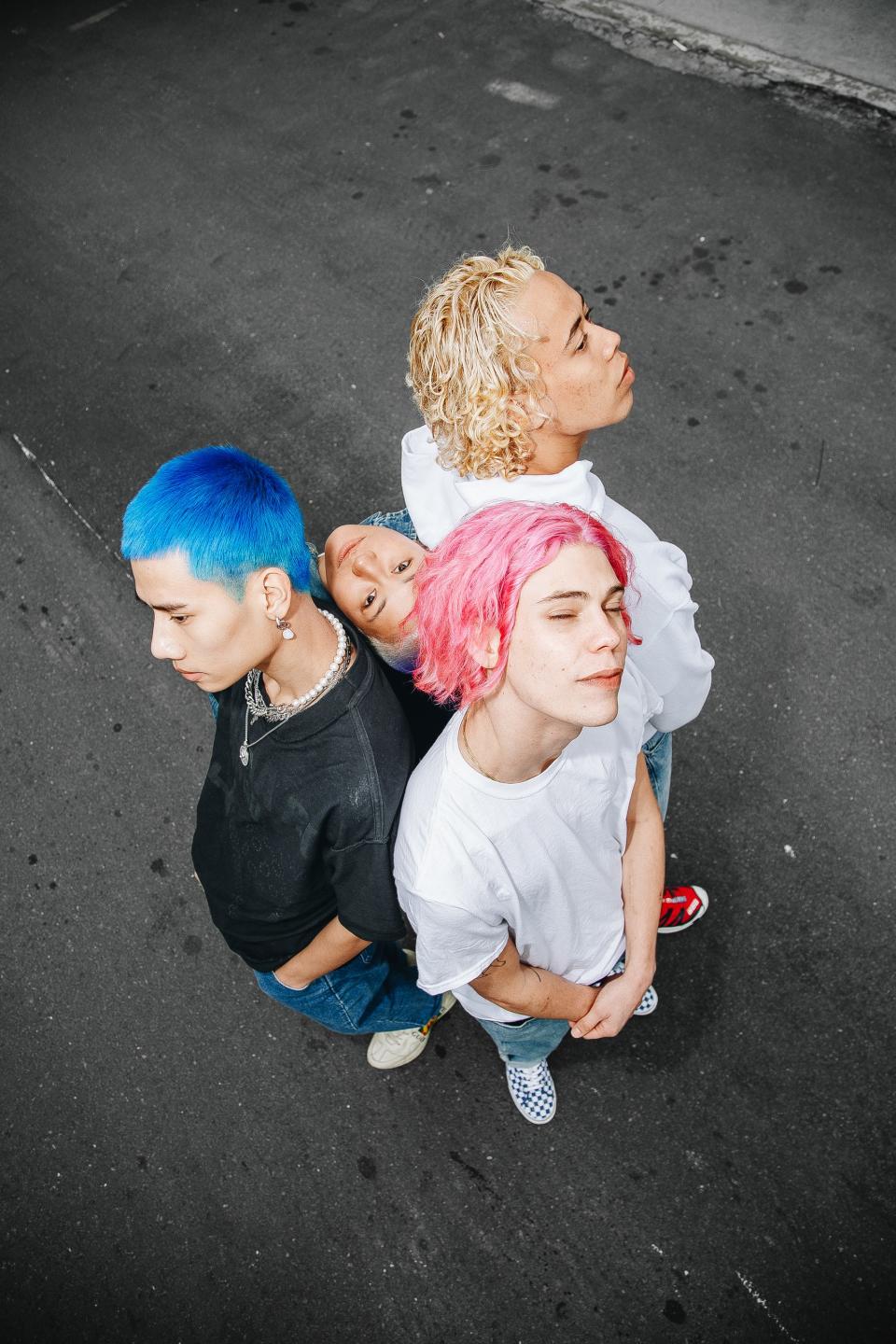How to Dye Your Hair Blond (or Pink or Blue or Green…)

It's fitting that the cover of the seminal album of the decade, Blond, features the elusive Frank Ocean with a jolt of Kermit the Frog–colored hair. He's in the shower, as if washing out some slime-green dye, ready to emerge reborn. Is there an act of personal expression more of the moment—or at least more perfectly suited for the Instagram age—than dyeing your hair?
It taps into our innate desire for reinvention, which might be why humans have been doing it for millennia. In ancient Rome, prostitutes were required to dye their hair blond; then the look spread to all levels of Roman society, as countercultural trends often do. In recent history, though, conspicuous hair color has been associated with punk rock, skateboarding, and spontaneous youthful idiocy involving a bottle of hydrogen peroxide and a friend's bathroom sink.
And now, along with tight black jeans and Thrasher tees, dyed hair is the latest subculture signifier to jump into the mainstream. Ocean's ombré experiments, for one, have launched a thousand imitations. NBA and NCAA basketball squads are peppered with fresh blonds. (Tyler, the Creator, meanwhile, debuted a Dennis Rodman leopard-print throwback last year.) And while everyone freaks out about face tattoos, teenage fans have been attempting to re-create SoundCloud rappers' psychedelic hair misadventures. Malcolm Cuthbert, colorist at Suite Caroline Salon in NYC, is dismissive of the “old thoughts” about hair color: “It used to be that if your hair is an artificial color, like blue, green, pink, or purple, then you're a menace to society. Or if you couldn't keep up with the color growing out, then you're punk or grunge. All those things are of the past.”



The crew of art students, musicians, and models we assembled for this shoot approach their hair color the way we decide which T-shirt to throw on in the morning. Fuji Ng's lime green hair, which he recolors every few months, has become such a signature look for the model that he made his Instagram handle @weedheadasss. Why green? Ng shrugs. “It's the color of nature,” he says. After a quick consultation with Cuthbert, he decides that deep blue is his new wave.
The science of coloring hair is complex, but as an art, it's pretty straightforward. All you're doing, Cuthbert says, is “taking your natural color out and then putting a new one back in.” First you bleach with “lightener” (a mixture containing ammonia) and developer (mostly hydrogen peroxide). Then you paint on the color. If you've got fine, light-colored locks, you can get fully bleached in an hour or so. If you've got thicker, darker hair, you'll want to have a good book on hand.



The hues you'll see dotting the beaches this summer will trend more toward single, saturated colors and less toward the graffiti-style rainbow treatment Kanye West rocked back in February. Perfection isn't the point—even if you go to a salon, there's nothing wrong with leaving it looking like a DIY job. “Ruddiness and grunginess are really in,” says Cuthbert. That means you can ask a pro for an “ugly” color like mossy green, dark orange, or dusty pink, normally the result of layering color on under-bleached hair. Cuthbert encourages certain clients to do it themselves. “If I feel that a client is able to or willing to experiment, I'll say this is what I would do, go buy this stuff, and you do it,” he says. “But that only works if you're a really cool person. The fuck-ups will look purposeful.” If you trust a friend's brushwork, touch-ups can be done on a PBR budget: Cuthbert himself uses $10 jars of Manic Panic, the famous punk dye introduced in the '70s by former Blondie backup vocalists. But these days, kids with dye jobs don't have '70s electric-hued liberty spikes. They get a simple, straightforward haircut that requires minimal styling before they upload the morning's first Instagram Story.

There's one downside to consider before going green: “Once you put bleach on your hair, it's forever changed,” Cuthbert says. At least until you chop it off and start again. But forever's nothing for Cuthbert's cool, young clients. As the 21-year-old photographer of this story, Tyrell Hampton, shot the process, his own close-cropped hair was soaking up lightener. Once the shoot wrapped, he washed out his hair to reveal an oatmeal-blond buzz. Was he going to get it colored? “I'm gonna keep it like this,” he said.
That night, Hampton posted a selfie of his new hair. It was as pink as the beating-heart emoji.
Samuel Hine is GQ's associate editor.
A version of this story originally appeared in the June/July 2019 issue with the title "How to Go Blond (or Pink or Blue or Green…)."
Photographs by Tyrell Hampton
Hair Colorist: Malcolm Cuthbert
Originally Appeared on GQ

